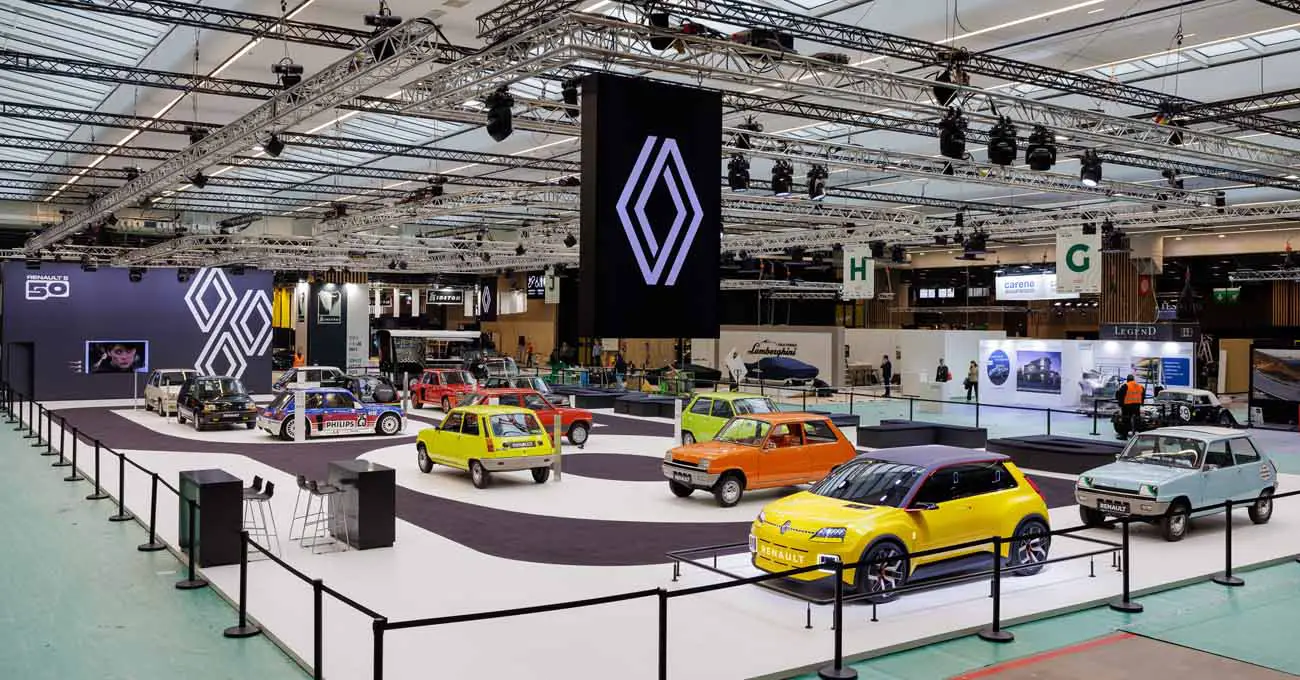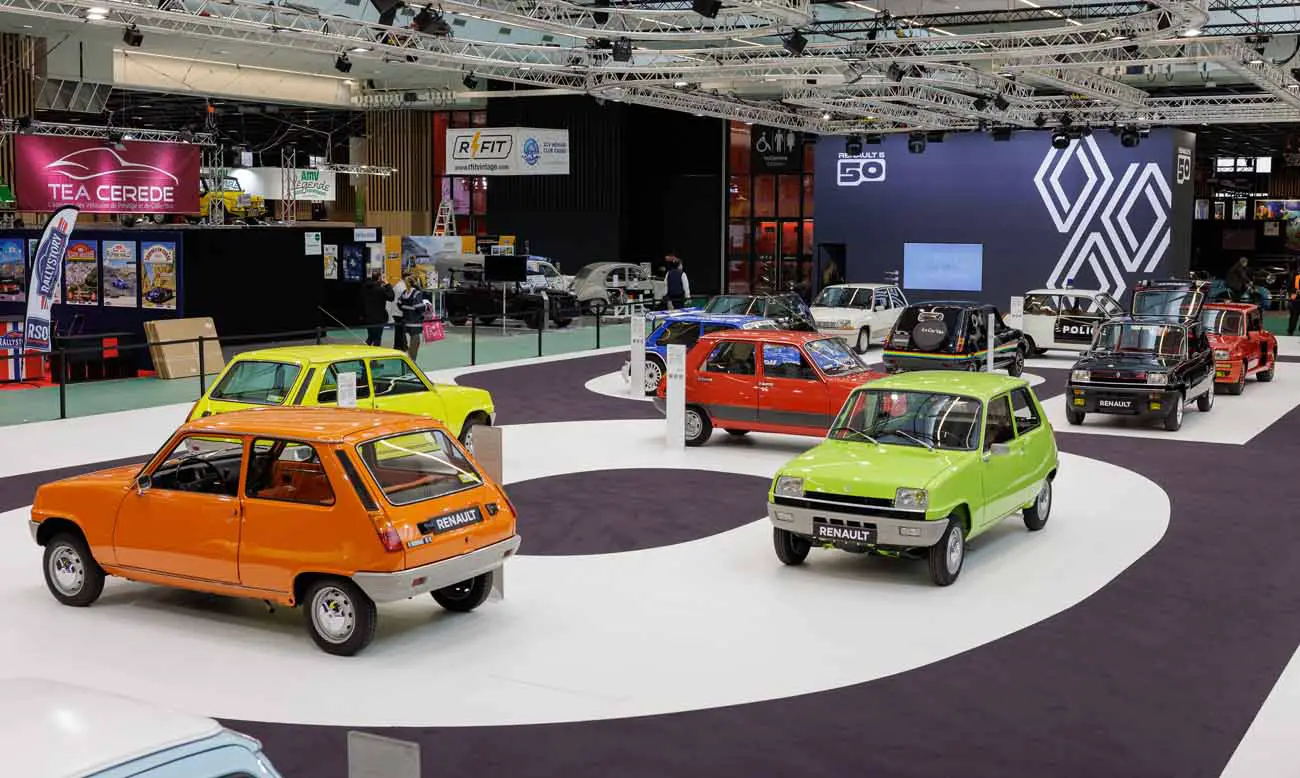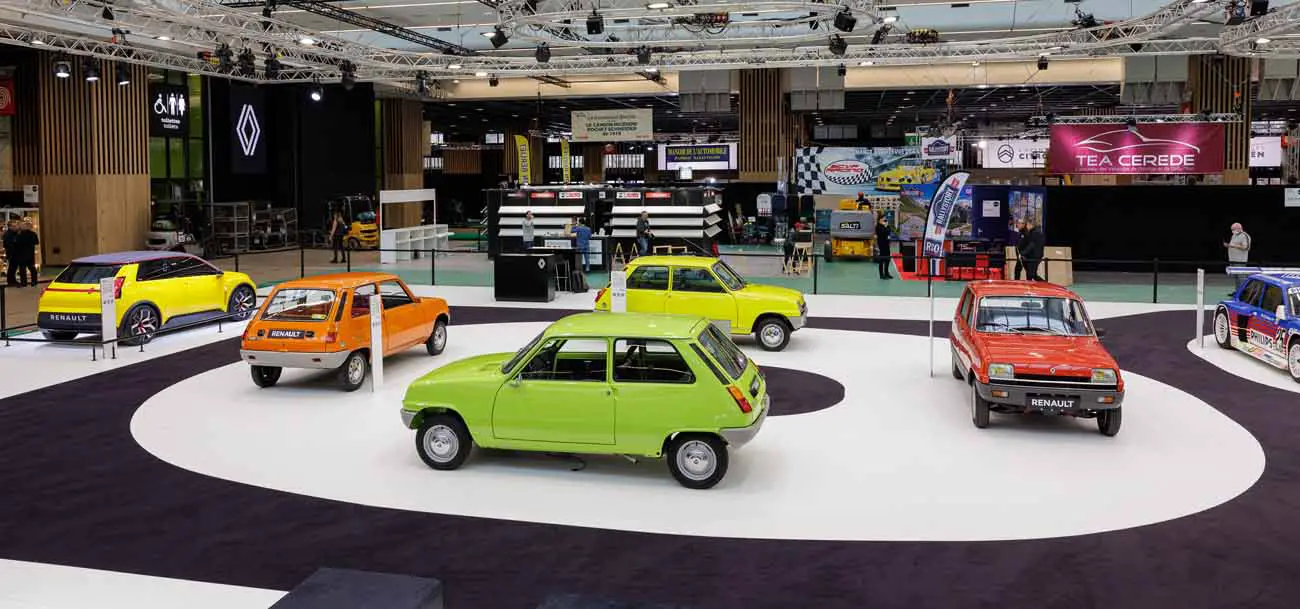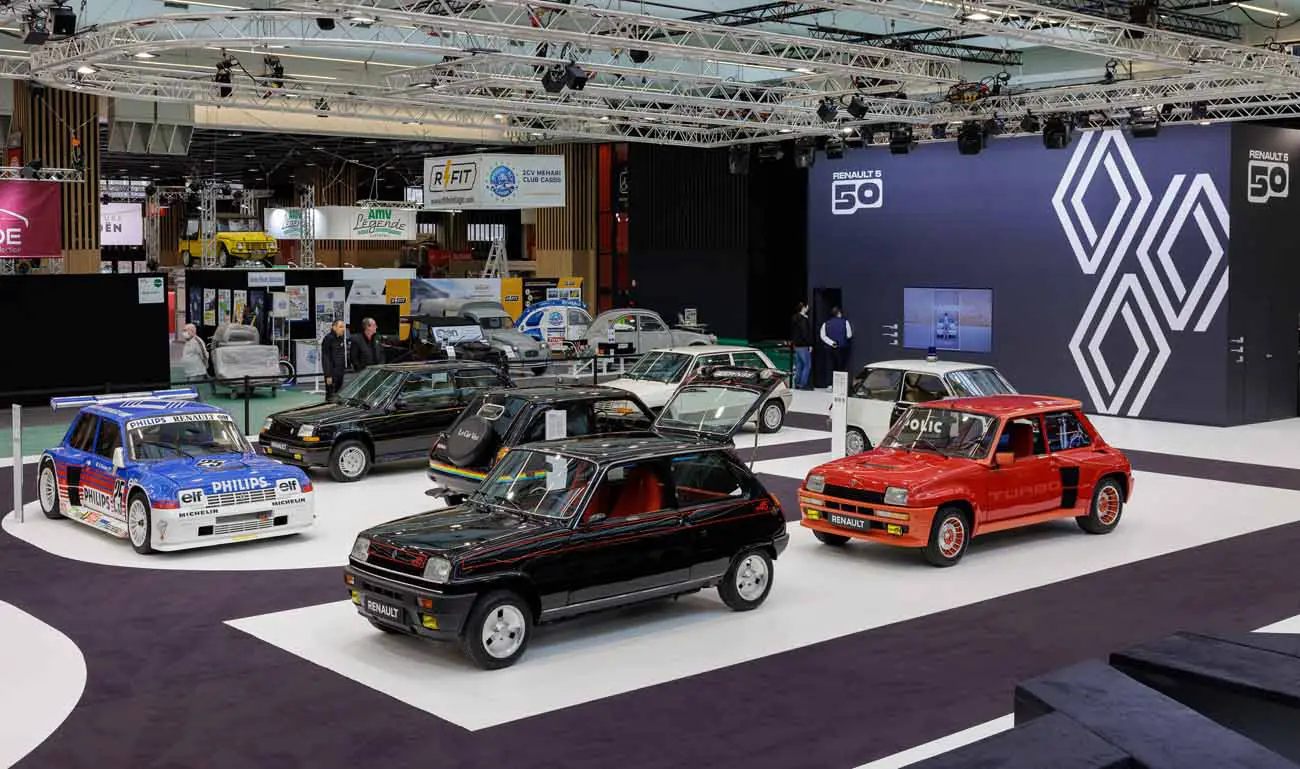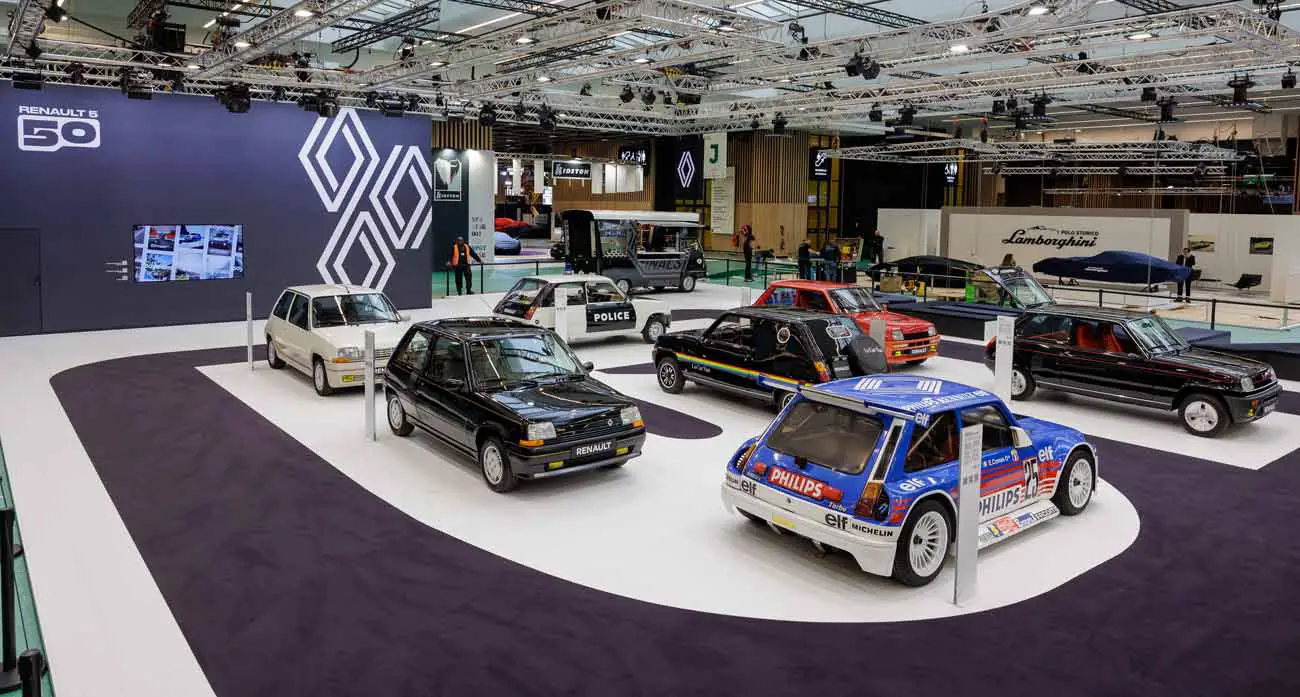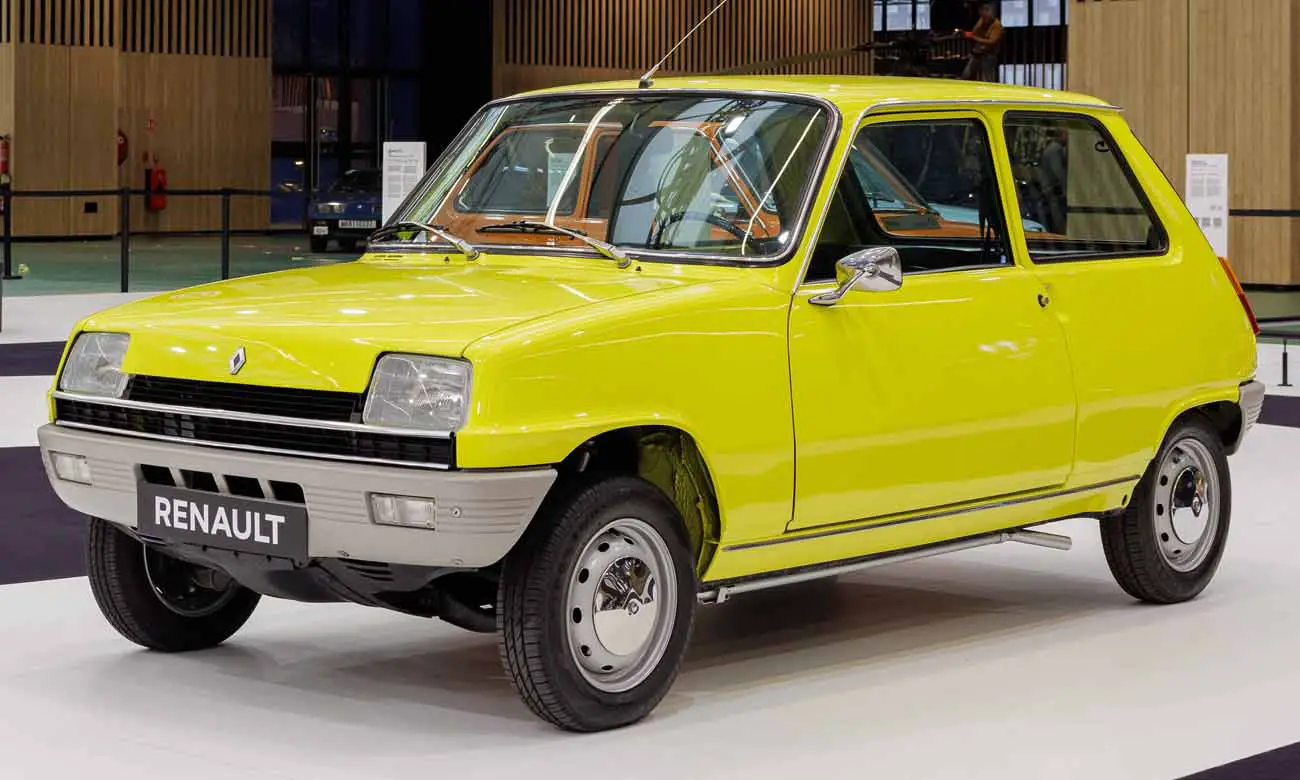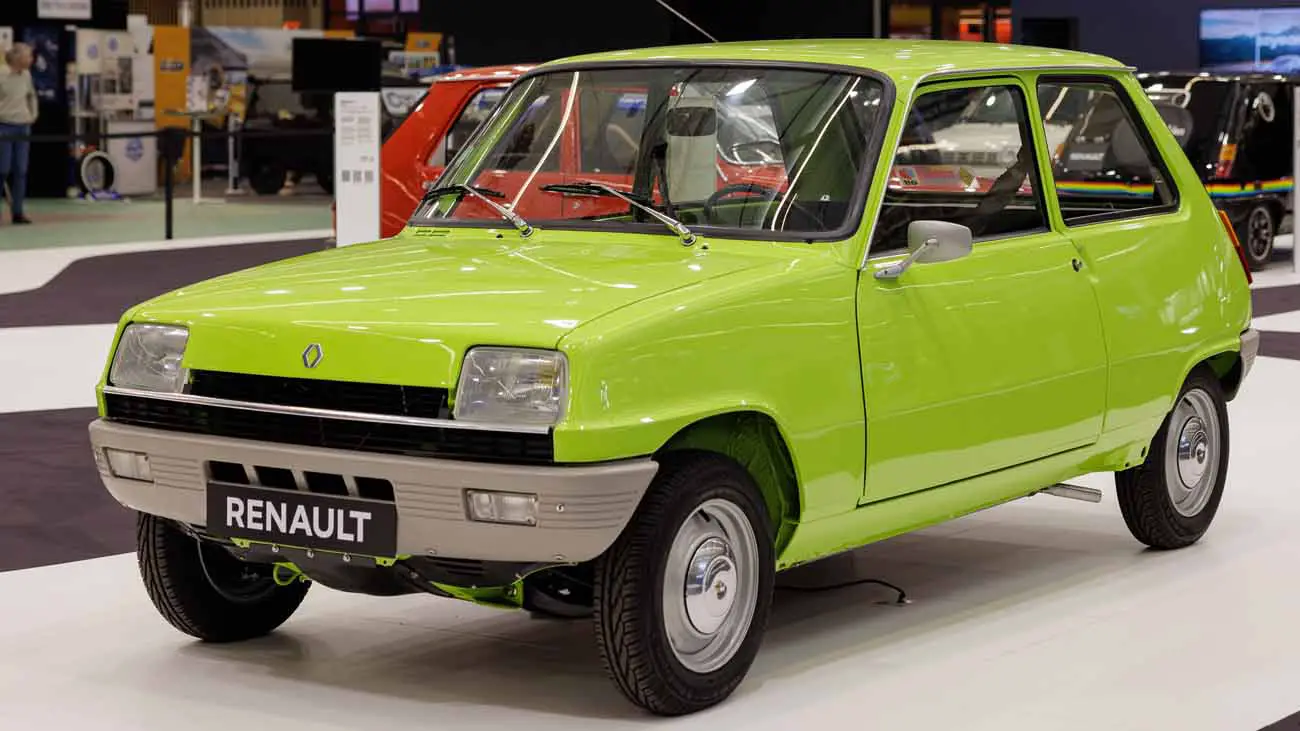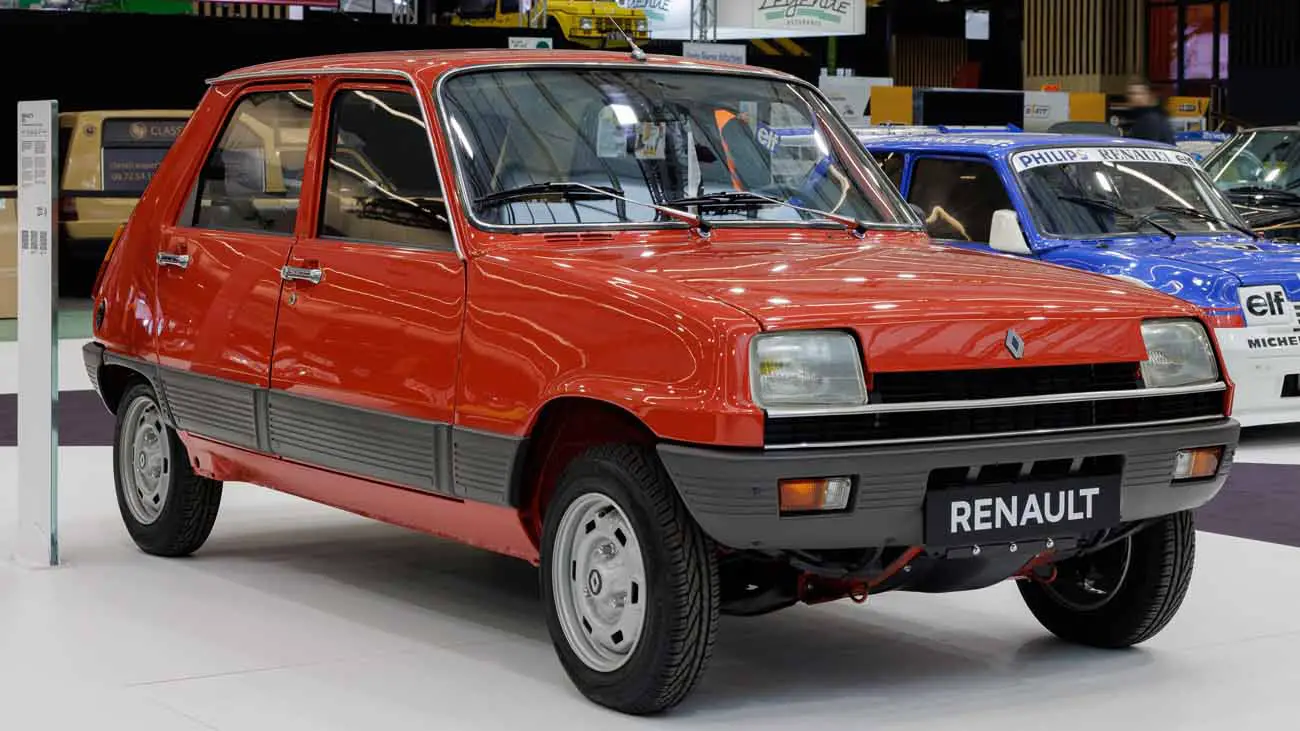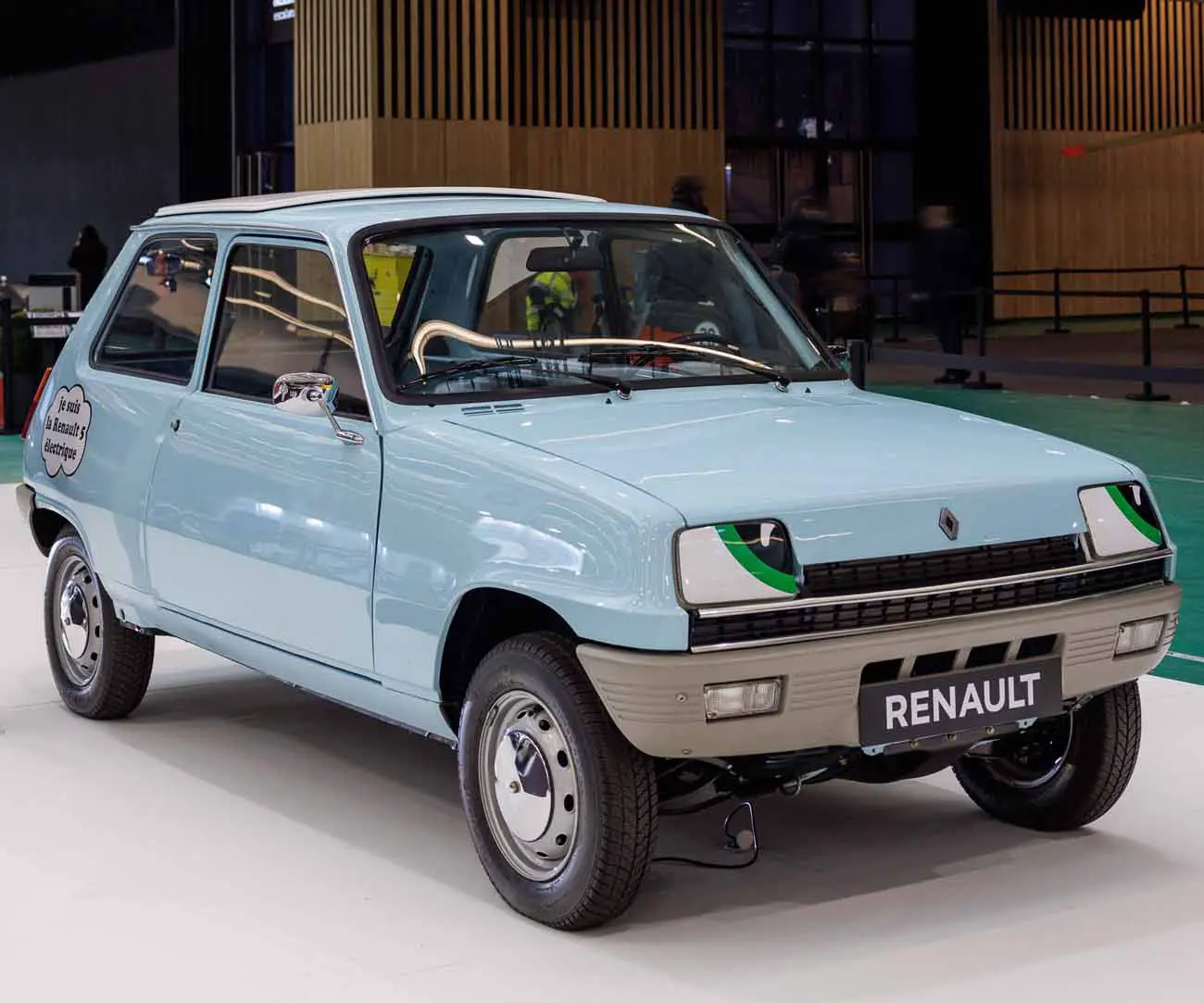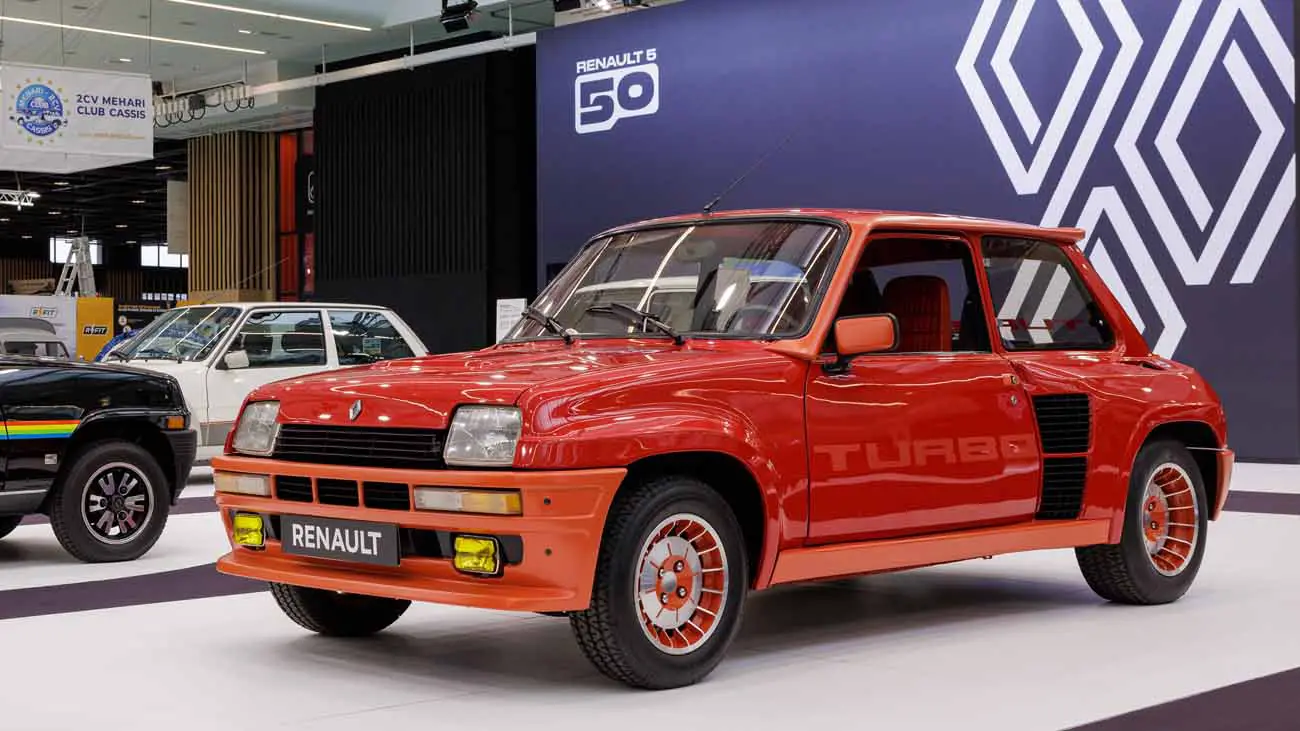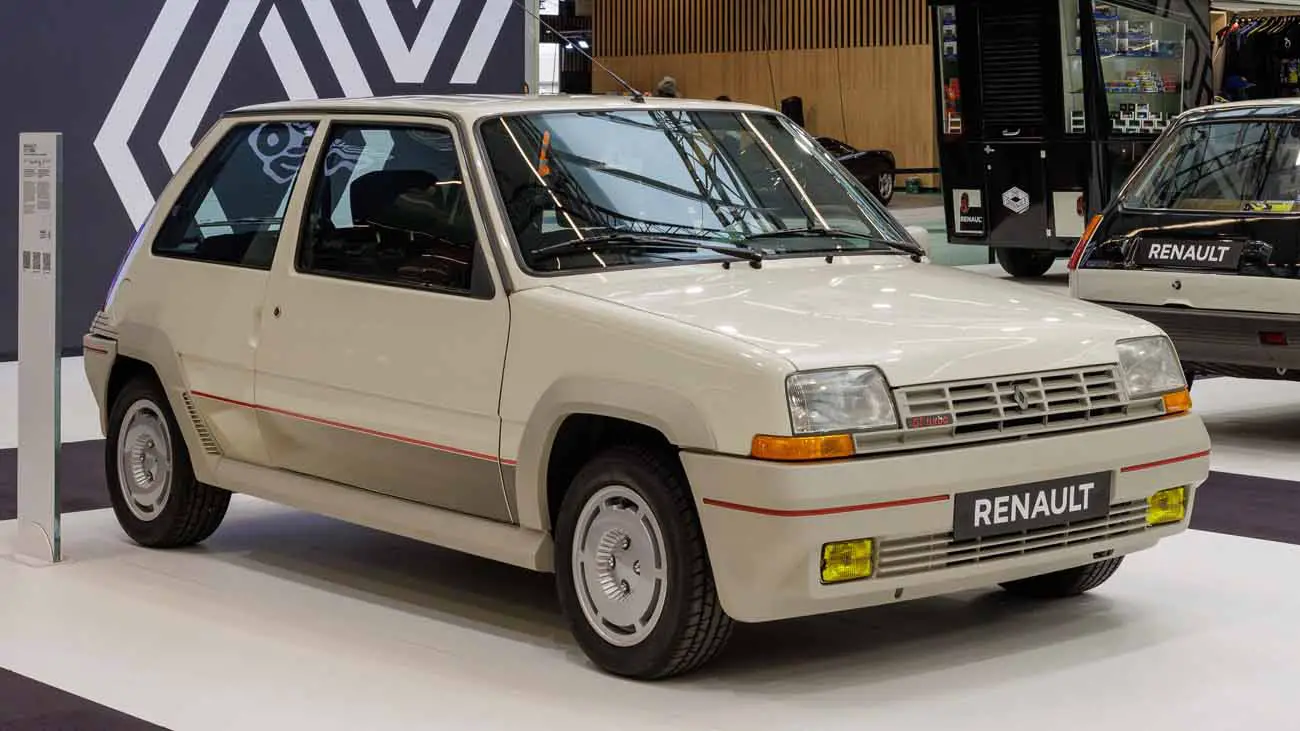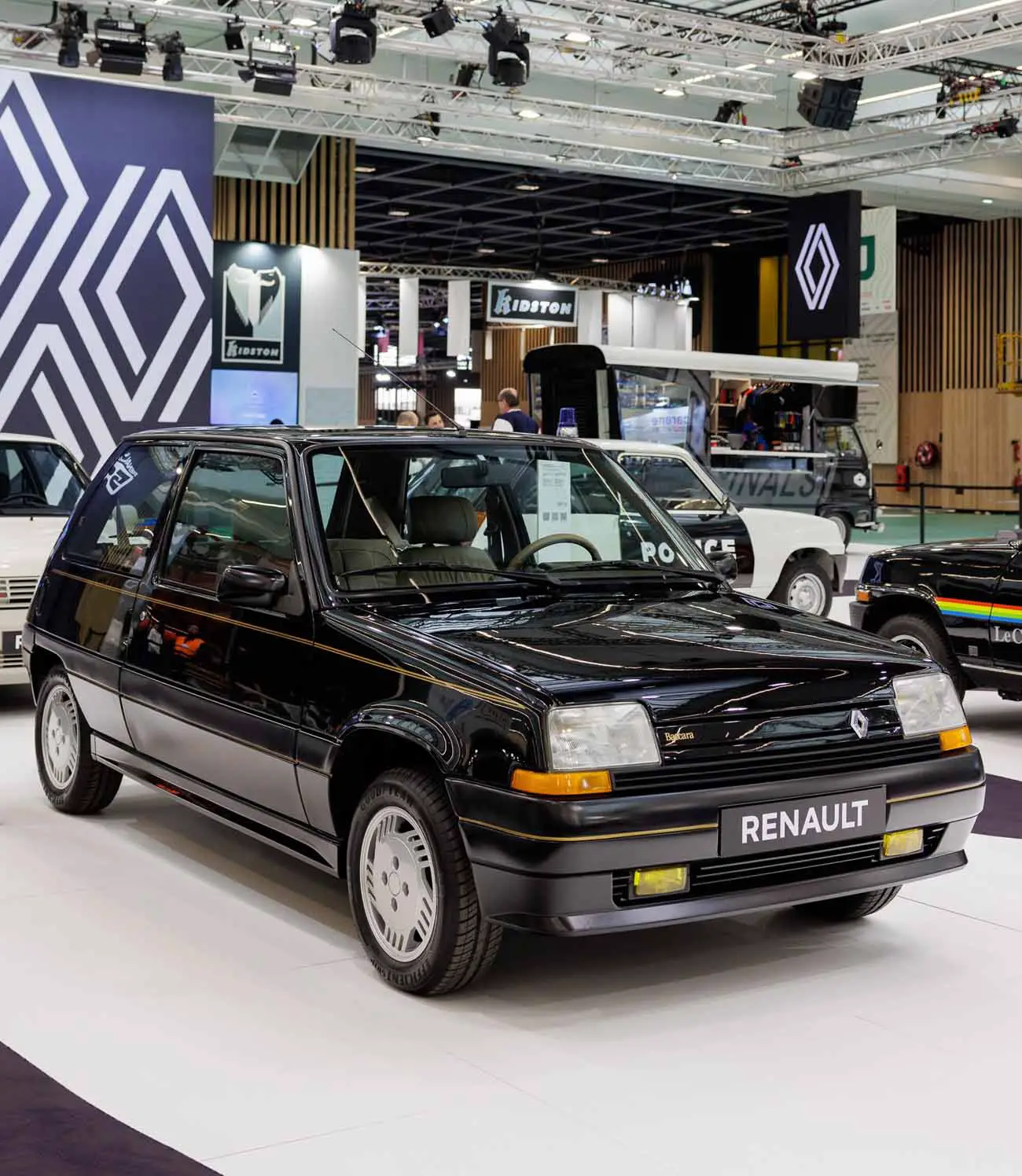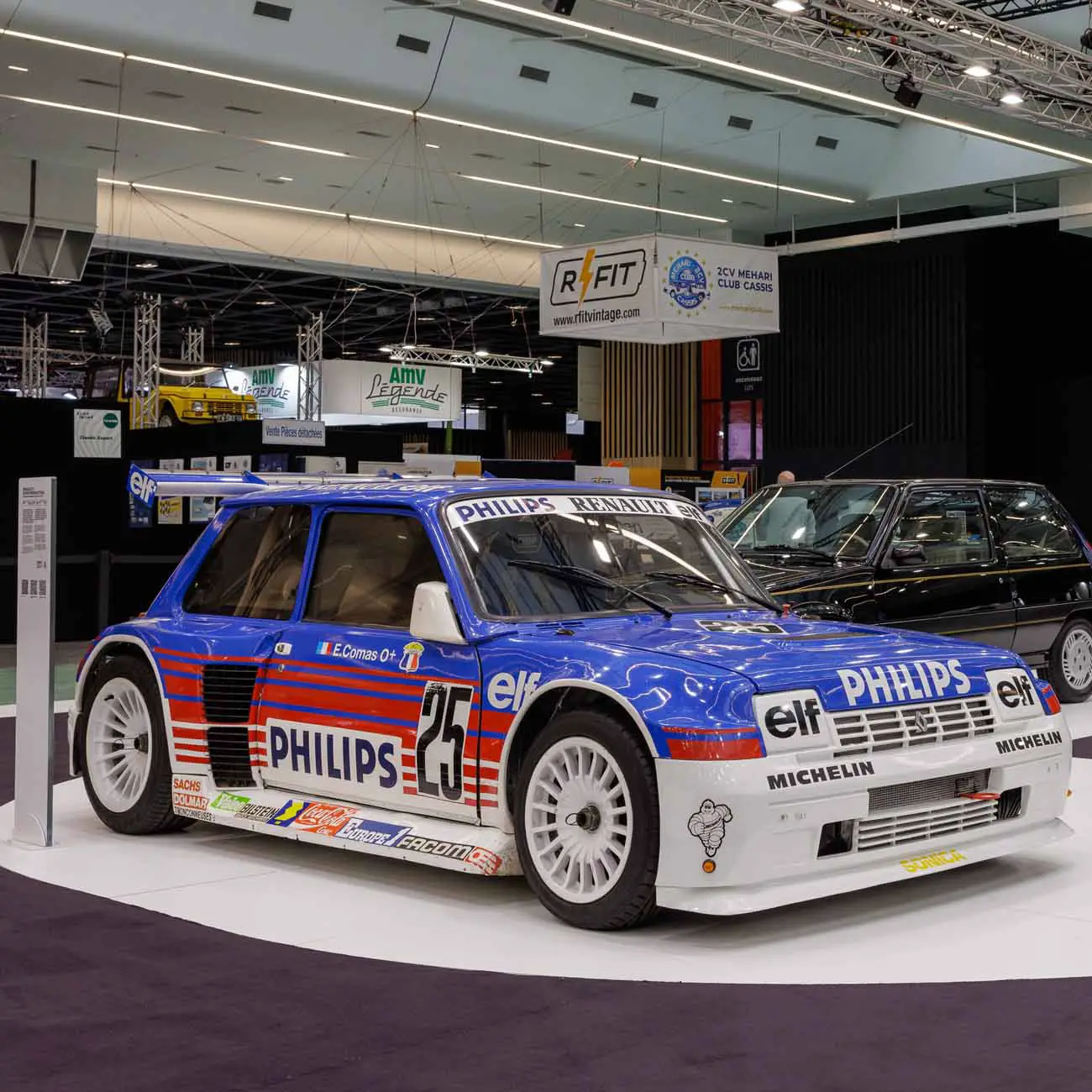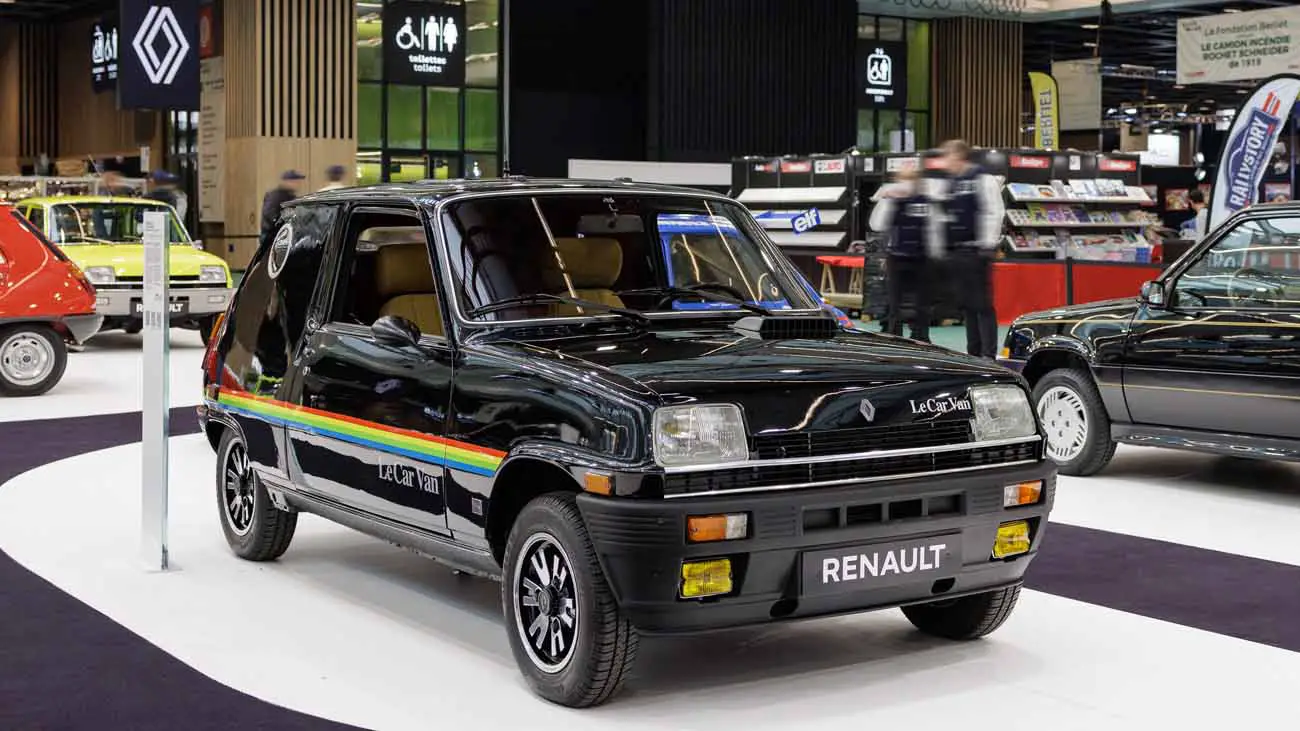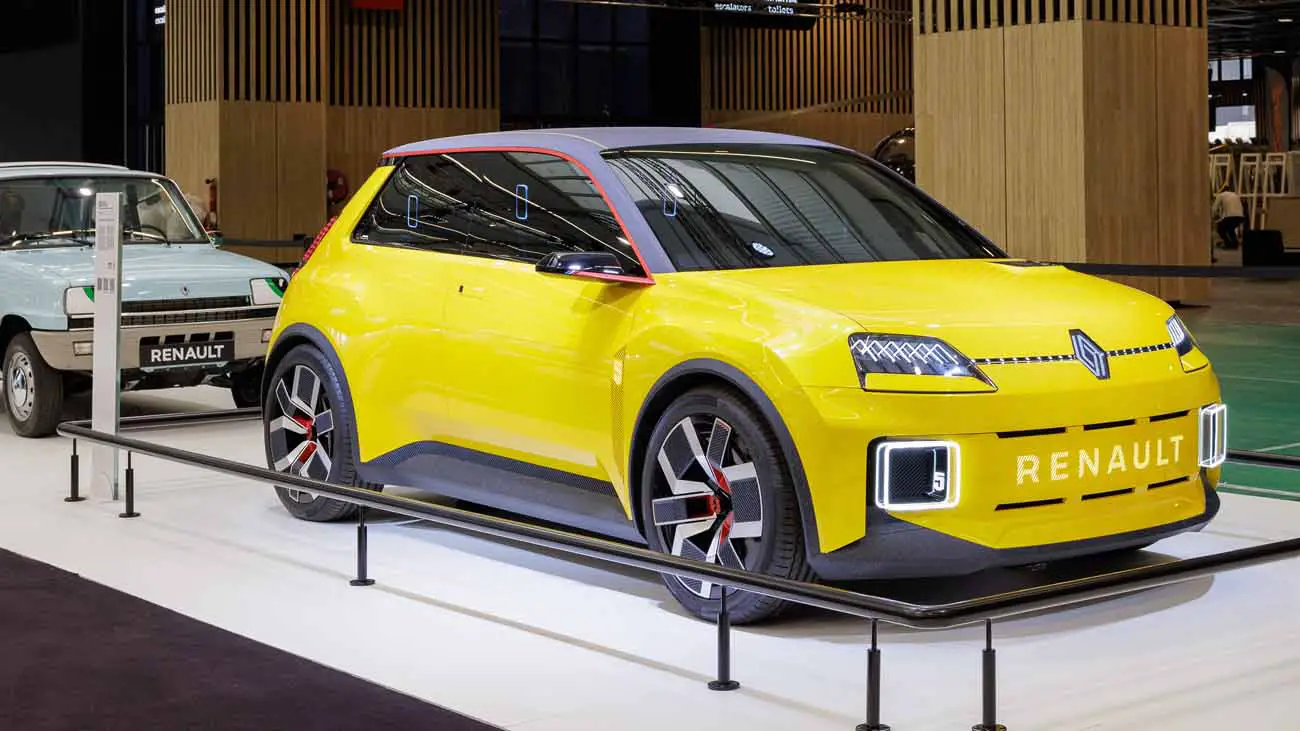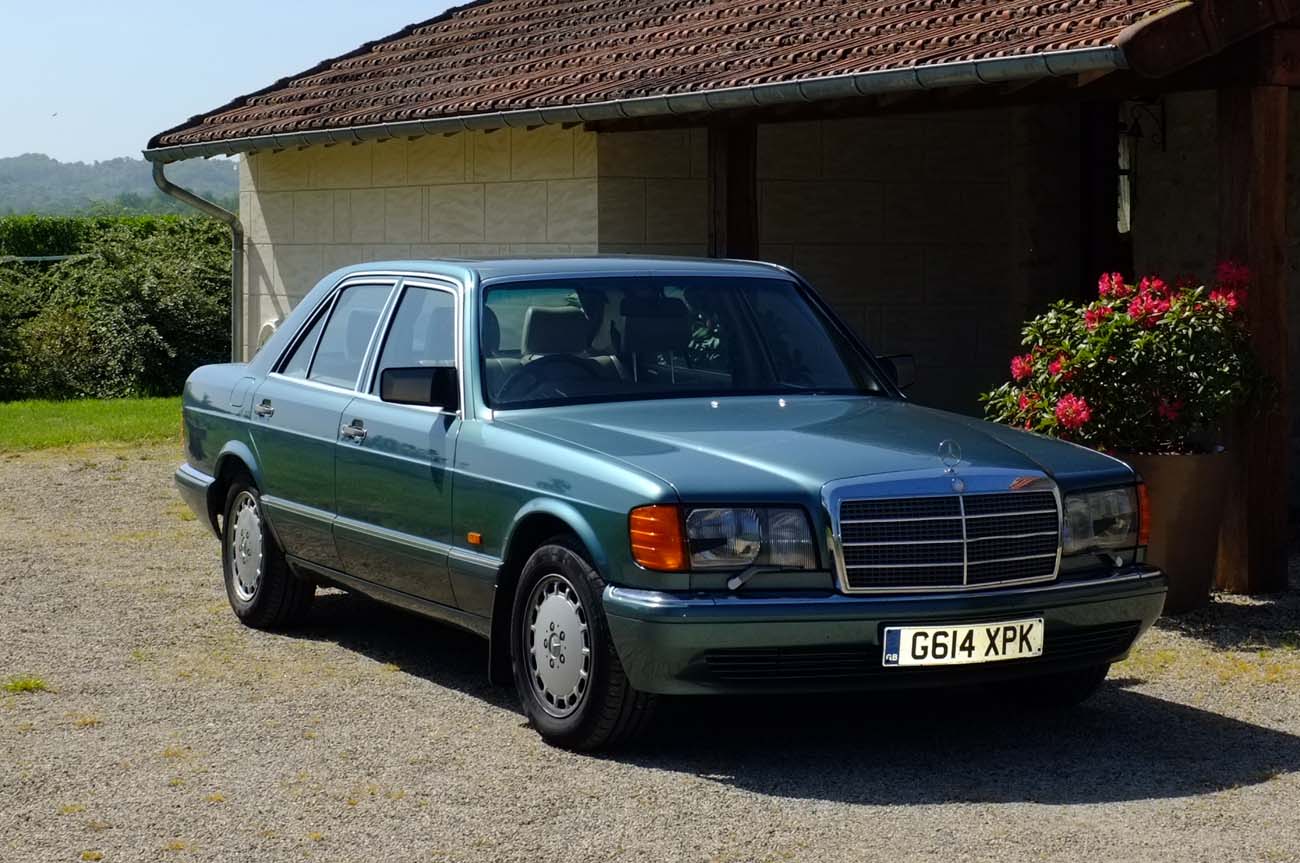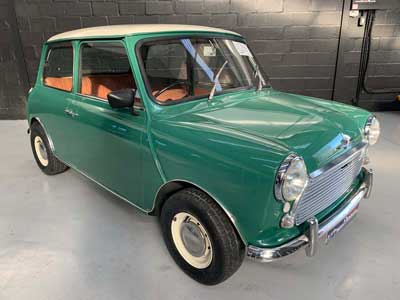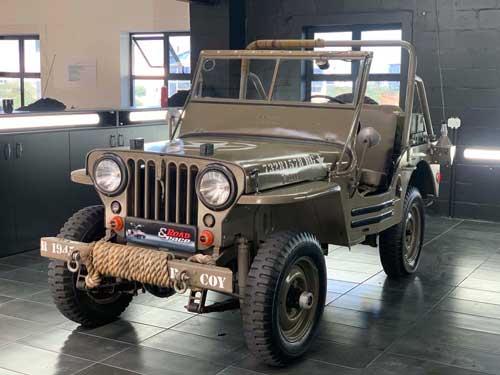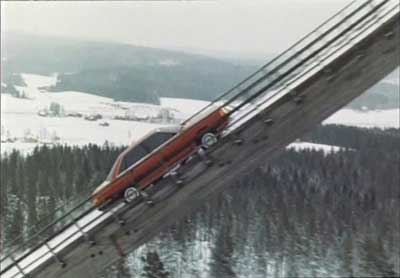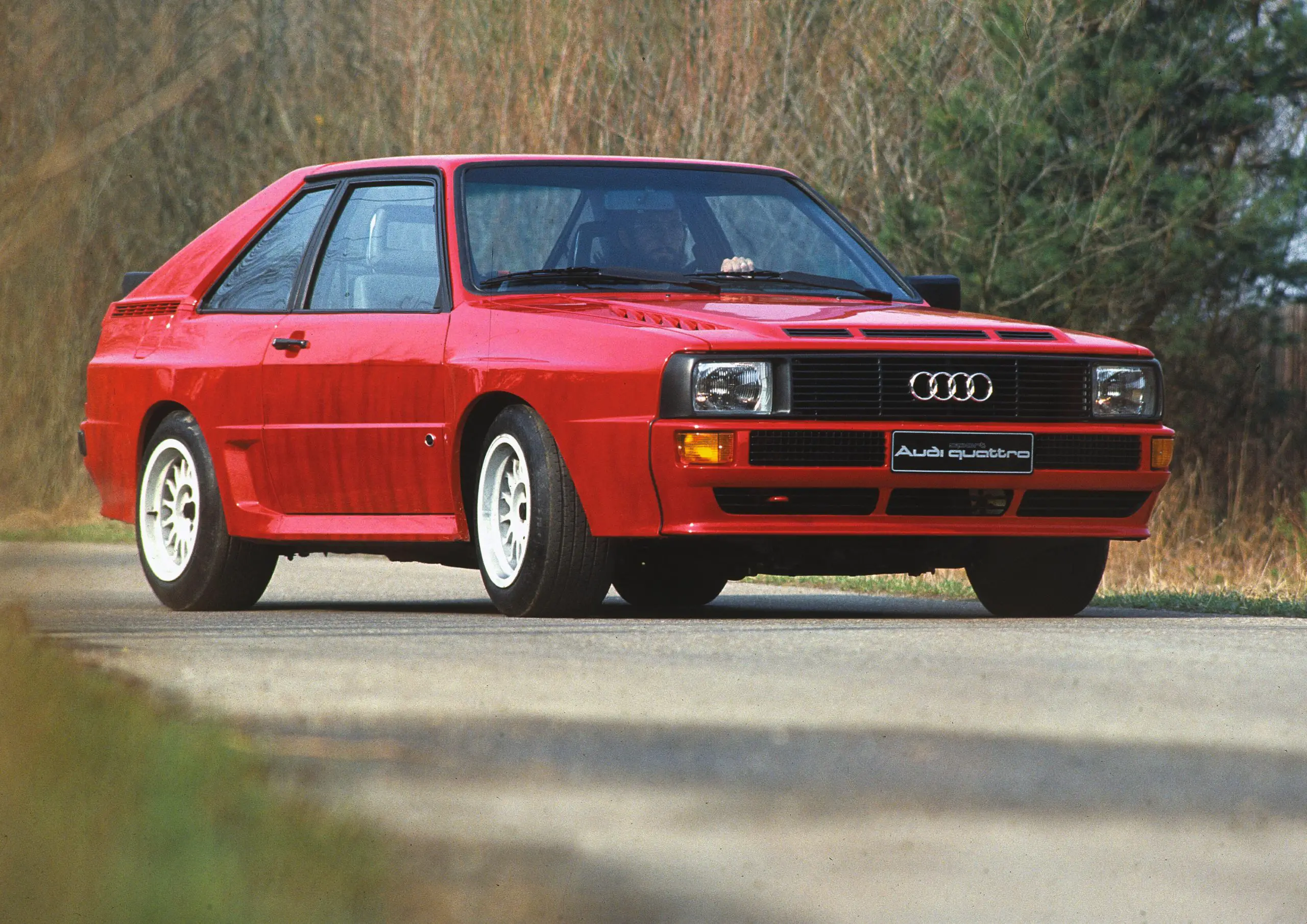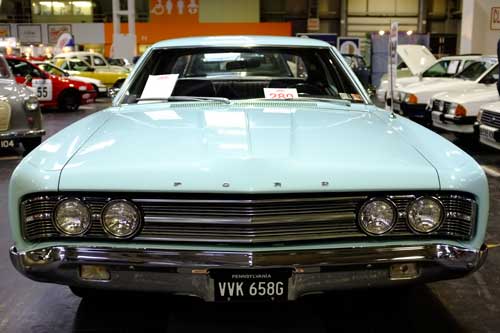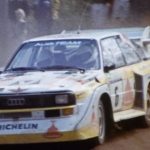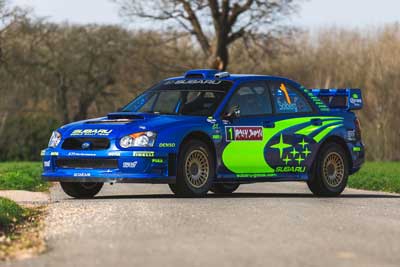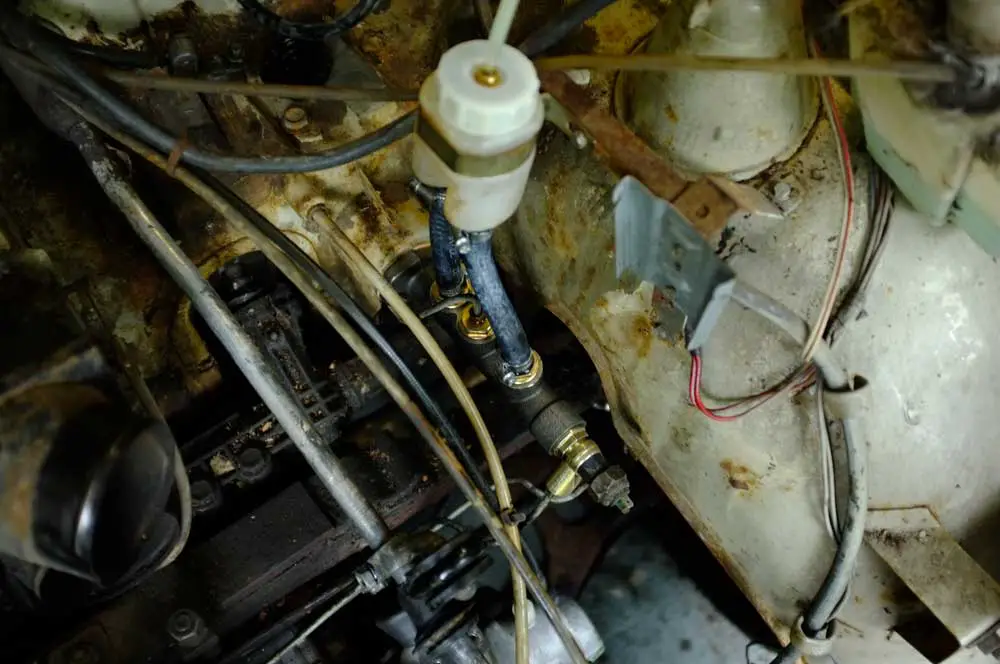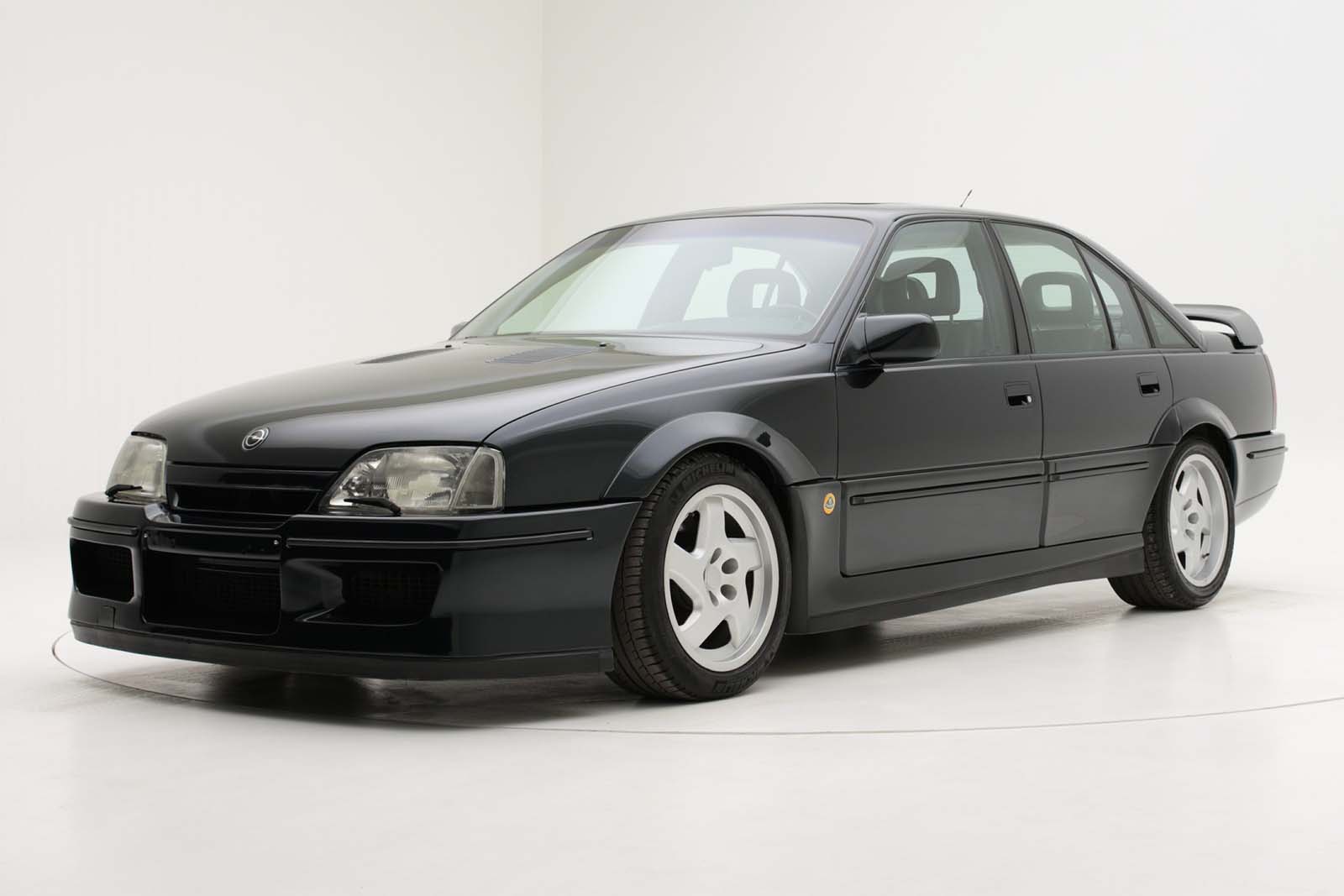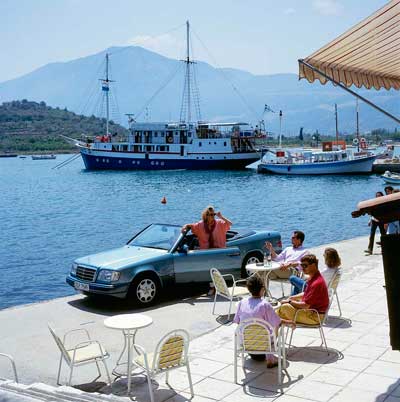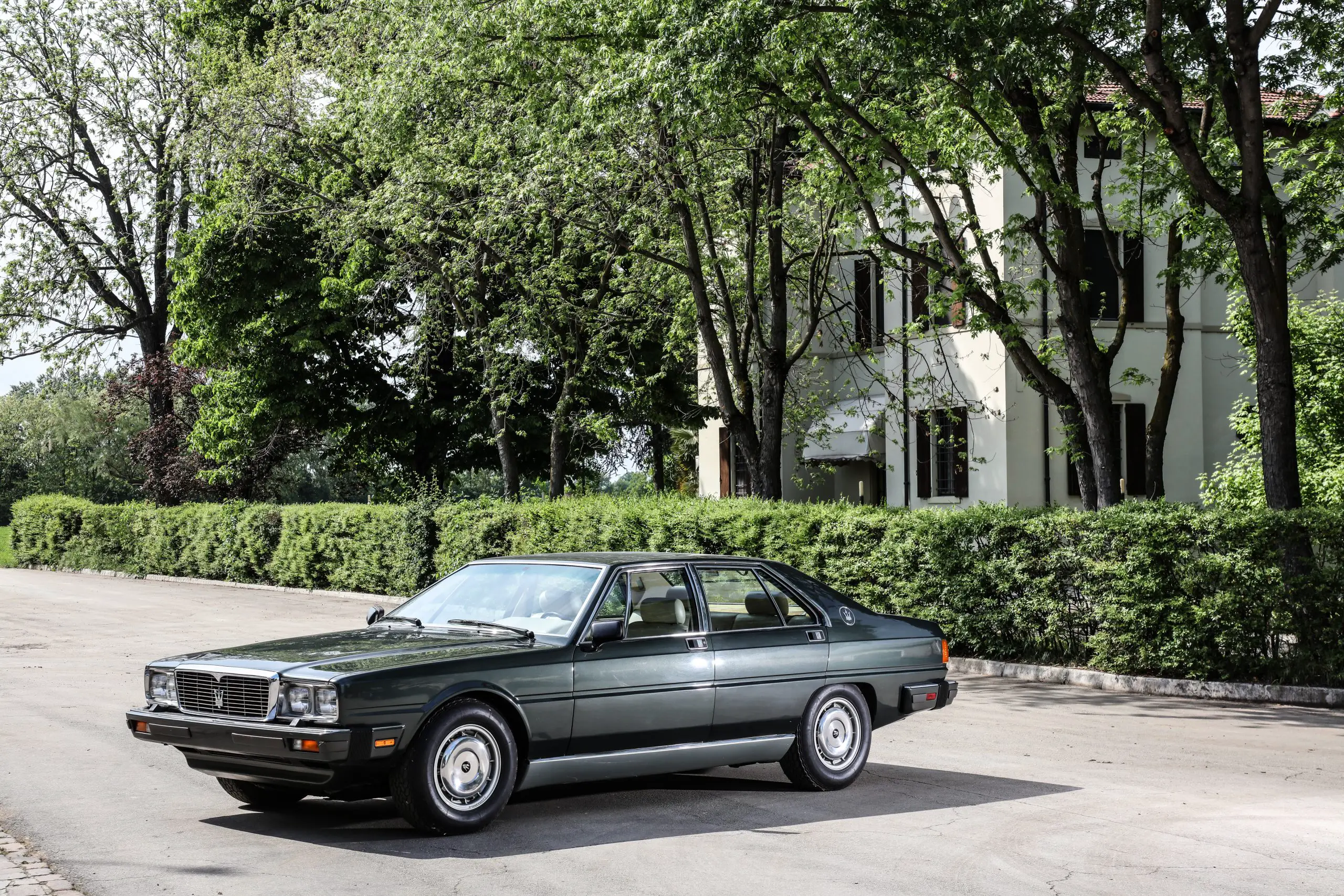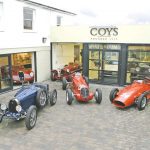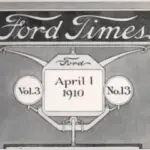
The Renault 5 Has Its 50th Birthday In 2002 At The 46th Edition Of Retromobile
Renault have turned up to the 46th Edition of Retromobile in 2022 with a stand full of Renault 5s to celebrate its 50th birthday.
This anniversary is significant as the 5 represents a huge milestone in the marque’s history. A hugely successful car which was exported to many places around the world and was largely responsible for saving the company.
The 805 m2 display is laid out on an R5 logo made specially for the 50th anniversary and takes the visitors on a journey of the evolution of the little supermini. Renault dived into their extensive collection of cars to create the display and it starts with the earliest 1972 R5 L and through to the spiritual successor in the new electric R5 prototype.
Amongst the models on display are some legendary cars. the 5 wasn’t just the first mass market 3 door hatchback it was also a serious performance car. The GT Turbo being one of the more rapid hot hatches in its day to the Supecinq Baccara which is a rare sight these days, being one of the more luxurious.
Motorsport was a big part of the 5s appeal from the mid mounted Turbo to the ultimate development of the 5 for circuit racing with the Renault 5 Super Production.
The Renault 5 was one of those cars that transcended classes. It was equally at home as cheap transport but also quite the favourite of the growing middle classes who often bought them as second vehicles. They were also very popular with the also growing female driving population.
The rounded appearance with the softer edges was a hit, but also practical. The hatchback design was meant to make the car versatile, and the suspension was designed to make it comfortable. It was just as happy in town as the countryside, though in the smaller engine variants performance was less energetic but still acceptable. The plastic bumpers front and rear shrugged off those Parisian parkers quite well too.
The majority of the 5s were made in France, but they were also made in Spain and Belgium. In other countries they assembled them from kits of parts. This included Iran, Mexico, Tunisia, Portugal, and South Africa.
Over 5.5 million of them were sold between 1972 and 1985 across five continents. This number reached 9 million if you include the replacement Supercinq over a total of 20 years. This little car was so successful that in 1980 it was the 2nd biggest seller in the world. It was France’s best selling car for the decade from 1974 to 1983.
The two electric 5s sit together, one from 1974 and the new prototype bringing the story up to the present day. the original is wonderful and charming, but the new one has its own appeal, and will be the first time many people will have seen one. It’s probably going to be quite popular too.
1972 Renault 5 L
Firs sold in 1972 there were two versions, the L and the TL. The L was equipped with a 782 cc four cylinder engine, which later grew to 845 cc. You got that version in many foreign markets from the start.
Renault 5 TL
The TL version of the new 5 came with a larger more powerful 956 cc engine giving it much more usable performance without adding any detracting characteristics.
Renault 5 GTL
The GTL had the addition of side mouldings that ran from bumper to bumper. New more stylish steel wheels and reversing lights. In 1978 it had pop out rear windows like the those on the 5 TS.
The GTL became the best selling of all the Renault 5s, the main attraction was the longer gear ratios that gave better fuel consumption and more relaxed cruising. Good timing with the 1978 oil shock increasing demand for cars just like this.
Renault 5 Electric
Renault unveiled the first electric 5 in 1972, it’s not just a new thing. Some 100 of them were made in conjunction with EDF Energy.
This blue example is from the second phase of production which ran from April to June 1974. the 6th of only 13 produced the two seat 5 had a range of 60 km.
Renault 5 Turbo
The original Renault 5 Turbo is quite the icon in its own right. A mid mounted wide bodied version shared very little with the front mounted namesake.
The desire for motor sport success towards the end of the 1970s, Le Mans 24 Hours and Formula 1 wasn’t enough. They had their sights set on rallying too and the application of all that turbocharger technology learned on the track made its way into the 1.4 litre four.
From an idea conceived by Jean Terramorsi and designed by Yves Legal, the Renault 5 Turbo was made specifically for rallying. First presented at the Paris auto show in 1978, the certification was given to a total of 400 units.
Alpine produced the cars at their factory in Dieppe, who produced 4,857 of them in total. The 160 bhp at 6,400 rpm rear mounted 1,397 cc engine tempted more than enough buyers. The early cars had aluminium doors and roof and a unique interior design.
The Turbo 2 was introduced in 1983 with the same technical specifications, the interior was from the Renault 5 Alpine Turbo and the body was all steel adding a little to the weight. it did make them cheaper though.
the R5 Turbos had great success in the rallying world, especially in the hands of Didier Auriol, François Chatriot, Dominique de Meyer, Joaquim Moutinho, Bruno Saby, Carlos Sainz, Alain Serpaggi, Jean-Luc Thérier to name but a few. But it became synonymous with the great rally driver Jean Ragnotti.
Renault 5 Supercinq GT Turbo
January 1985 saw the launch of the new Renault 5 GT Turbo, just four months after the model replacement Supercinq was introduced.
More modern in style it came with further innovations. The 1.4 litre turbocharged four came with a Garrett T2 turbo and produced 115 bhp. The light weight of the car gave it impressive acceleration.
It featured heavily in competition with the R5 GT Cup and had its own rallying career, not just in France.
160,000 GT Turbos were produced between 1985 and 1987 in Phase 1 guise and from 1987 to 1990 as the Phase 2.
Renault 5 Supercinq Baccara
The Baccara was the ultimate refinement of the supermini. Leather seats and steering wheel, two tone interior. Black leather on the gear knob, thicker carpets in the cabin and the boot and the garment cover which was attached under the rear parcel shelf.
Electric windows on the front and with central locking. impressive stuff for such a small car in its day. Available in only three colours, Arabica Brown, Lichen, or Black.
Renault 5 Super Production
The Super production Renault 5 is a racing development produced in 1987. The four cylinder turbocharged engine produced 370 hp configured in a similar way to those rallying first generation 5s. But this was pure Supercinq and purposefully designed for the circuit only.
Racing legends Jean-Pierre Beltoise, Jean-Pierre Jabouille, Jean-Pierre Jarier and Jean-Pierre Jaussaud took the production looking cars to the racetracks.
For 1984, Renault Sport designed a Renault 5 Turbo for both Jean Ragnotti and Jean-Louis Bousquet. Two wins in 1986 saw Renault achieve a stunning second place at the ‘Constructors Championship’ at the season’s close.
This excellent result saw Renault produce a third car to Formula 1 hopeful Erik Comas the next year. The Billancourt trio earned six victories in the overall rankings.
Renault 5 Le Car Van
Heuliez released a limited edition ‘Le Car Van’ in homage to the iconic American van in January 1974. Based on the Renault 5 TS it was more a 2 seater with its rear quarter windows replaced by an injected polymer and featuring a polyester porthole. A spare wheel was fitted to the outside of the van on the rear.
The van was finished in a shiny black lacquered paint with a rainbow stripes and a contrasting red carpet interior.
Production finished in 1983 with around 450 examples sold.
Renault 5 Electric Prototype - Nouvelle Vague
This prototype is due to go into production in 2024. It has some of the same sort of attributes as the original, the proportions are there, but the car is much larger. the new car is sure to draw as much of a crowd as the original.
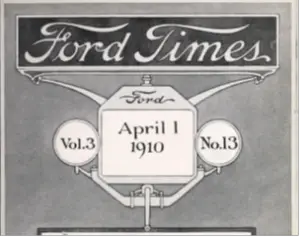
Ford’s Heritage Vault Makes The Ford Times Magazine Available To The Public
Ford’s expansion through the early 20th century was something to behold, the rapid growth of the company and the success of the Model T led
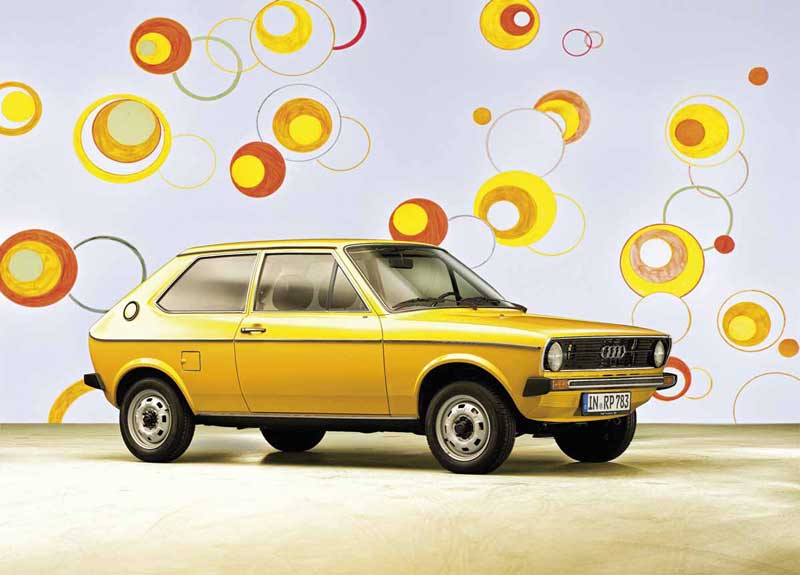
The Audi 50 At 50, Germany’s First Small Car
The Audi 50 that was the basis for the VW Polo is now 50. The small car was developed ahead of the oil crisis of
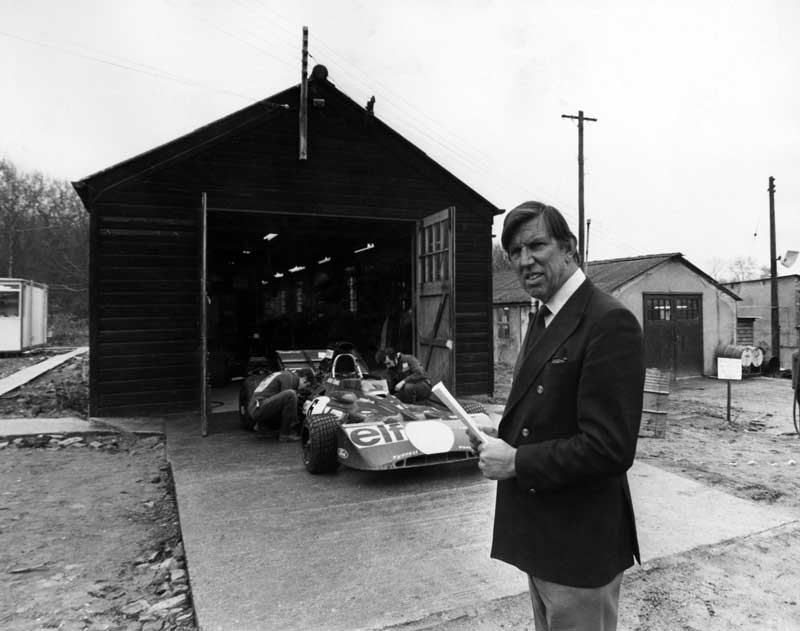
The Best Things Happen In An English Shed, Especially The Tyrrell Shed At Goodwood
The Tyrrell Shed once home of the World Championship winning Tyrrell Formula 1 team has been relocated to Goodwood and is set to open for
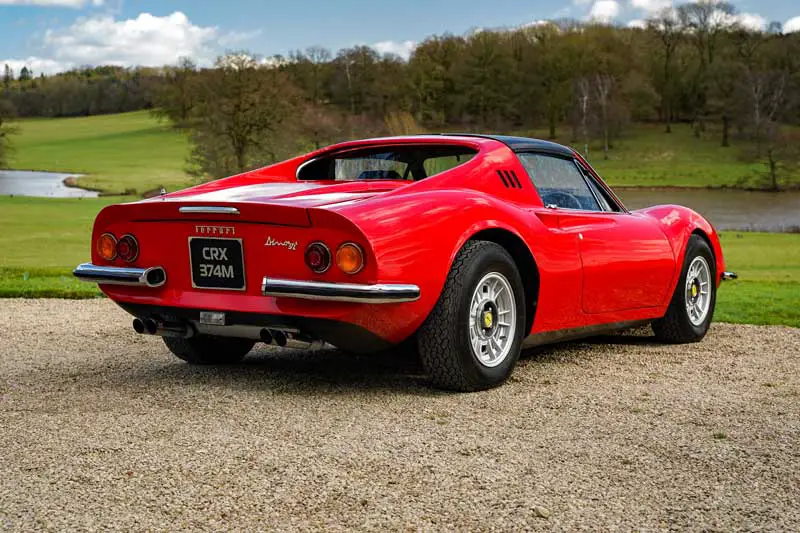
A 1973 Ferrari 246 Dino From The Manager Of Rock Legends Led Zeppelin Sold At Auction
Something of a piece of rock and roll history went for sale with the auction of Led Zeppelin manager Peter Grant’s old Ferrari 246 Dino
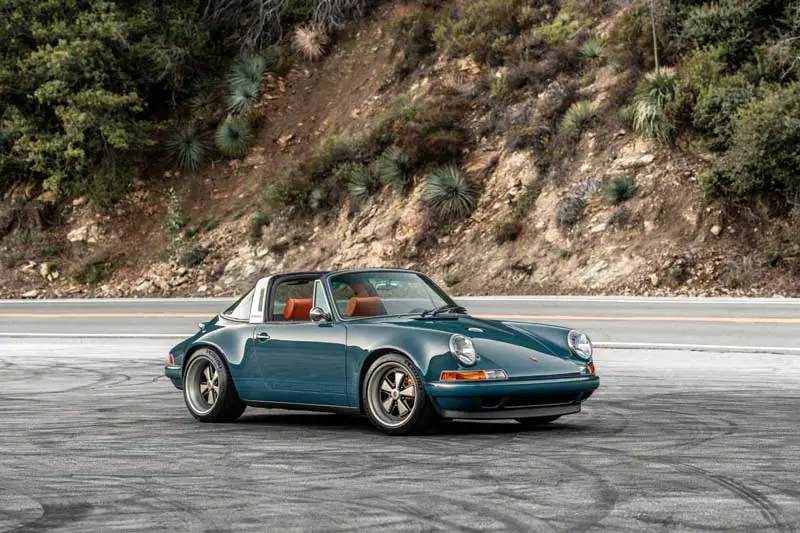
California Based Singer Has Completed Its 300th Restoration, The Sotto
Restomodders Singer have produced their 300th 911 already and it’s another964 based conversion called the Sotto. It’s almost hard to believe it was a964, though
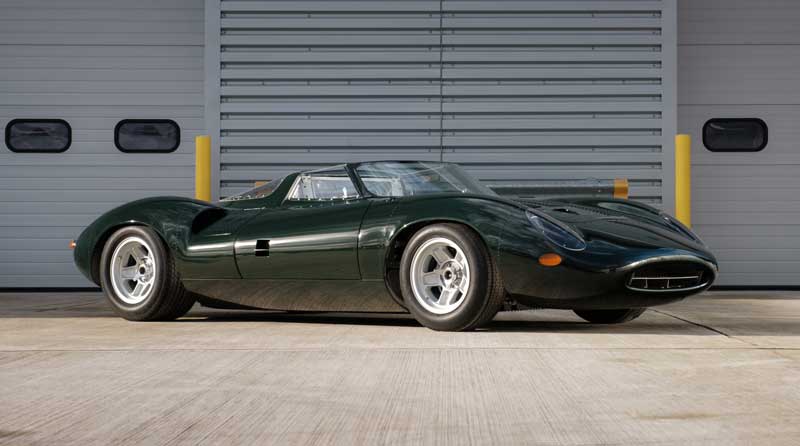
The True Spirit Of The Jaguar XJ13 Presented By JD Classics At Retromobile 2024
The masterpiece that is the Spirit of the XJ13 is unveiled at Retromobile 2024 by JD Classics of Chelmsford, England, and seen for the first
